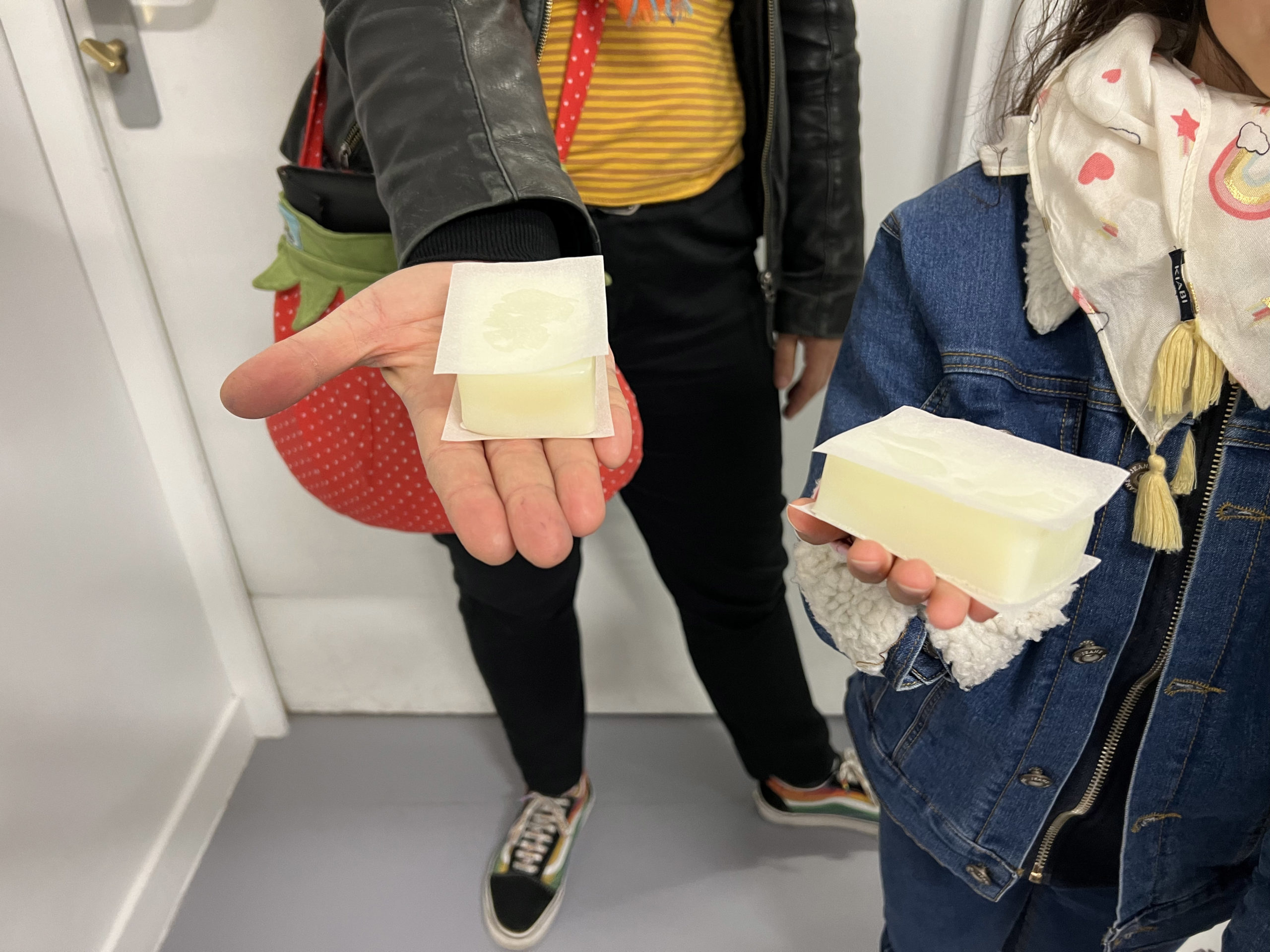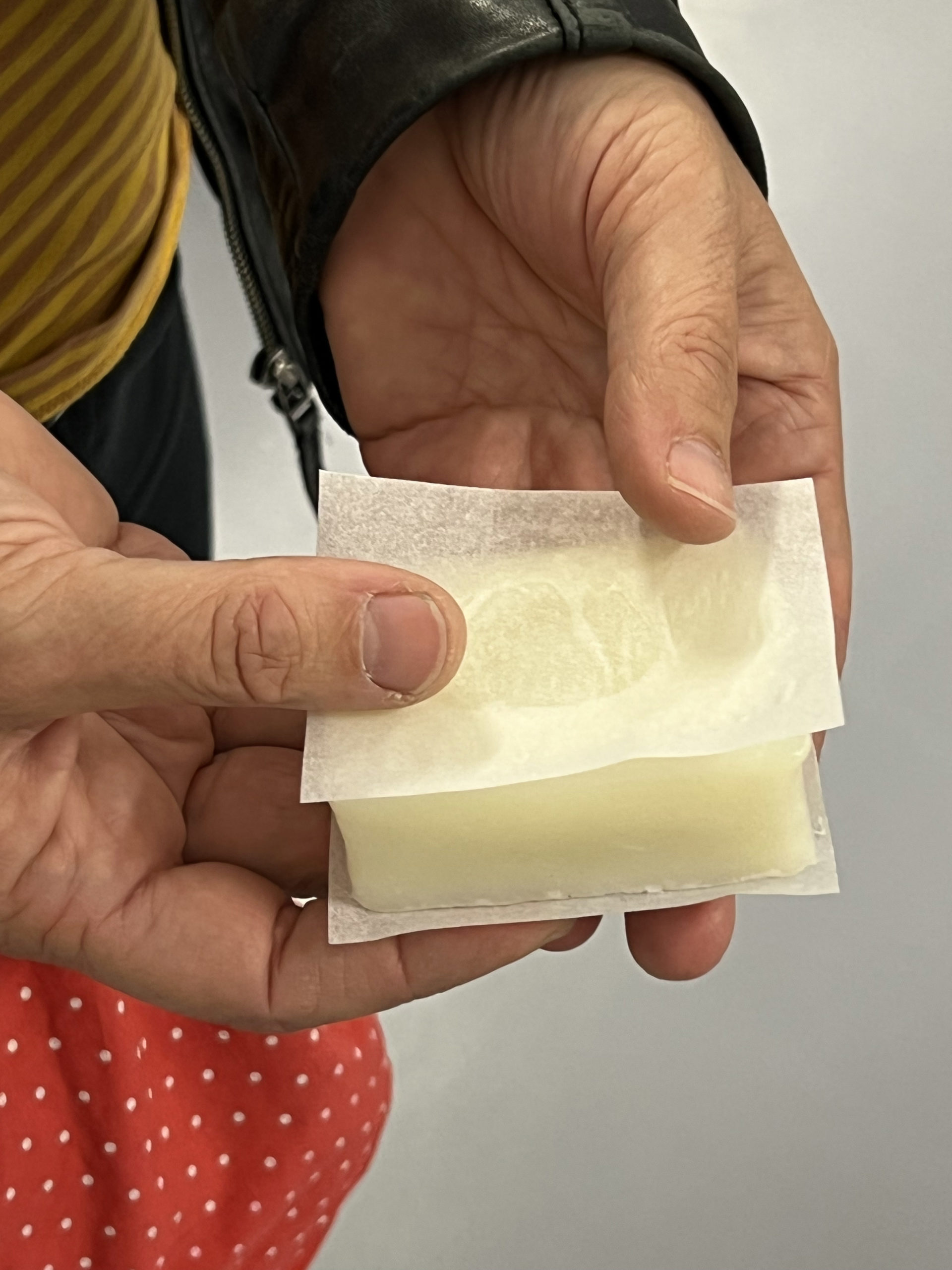Kasia Ozga
April 30 to May 7, 2024

« They’ll say we’re disturbing the peace, but there is no peace. What really bothers them is that we are disturbing the war. » – Howard Zinn, 1971
I’ve been watching the ongoing protests over Gaza at college campuses around the United States and the harsh treatment facing certain students who participate. Universities have forced the removal of Gaza Solidarity Encampments, barred some students from campus housing, expelled others from classes, and even canceled graduation ceremonies. The visual images of police on horseback herding students and police with batons ripping through tents evokes the experience of some students during protests against the Vietnam War in the late 1960s.
During an academic conference I attended at a college outside of Philadelphia last week, students organizers put up an encampment on the school’s main lawn. I don’t know if it too was removed.
The images of death and destruction in the Middle East are excruciating and inexcusable. Killing innocent civilians is always wrong. Should always be avoided. The scale of devastation and dehumanization is overwhelming, inconceivable. We find ourselves in yet another death spiral of violence. Leaders molding young people into killing machines.
Young people here say (shout) “NO!” and find themselves rejected by the very institutions that educate them, claiming to encourage civic engagement and active citizenship. (Some students go too far, attacking their fellow students with antisemitic chants, forgetting that violence begets violence…) Most protestors are practicing civil disobedience, spreading a message (perhaps an idealistic message) of peace in the face of suffering at a scale they cannot fathom (can no longer accept).
Occultente was made several years ago. The participatory wall-hung sculpture invites the public to enter inside and experience a space entirely devoid of light. The title is a play on words combining the word for tent with the French word occulter/occultant which means to mask/conceal. The first version of the piece was sewn in late 2016 following the evacuation of the original Calais jungle in 2016. More recent iterations were produced in 2017 and 2018 on the basis of commercially available camping tents. The black tent is a space of absence and also, at this time, a space of mourning.
March 26 to April 2, 2024
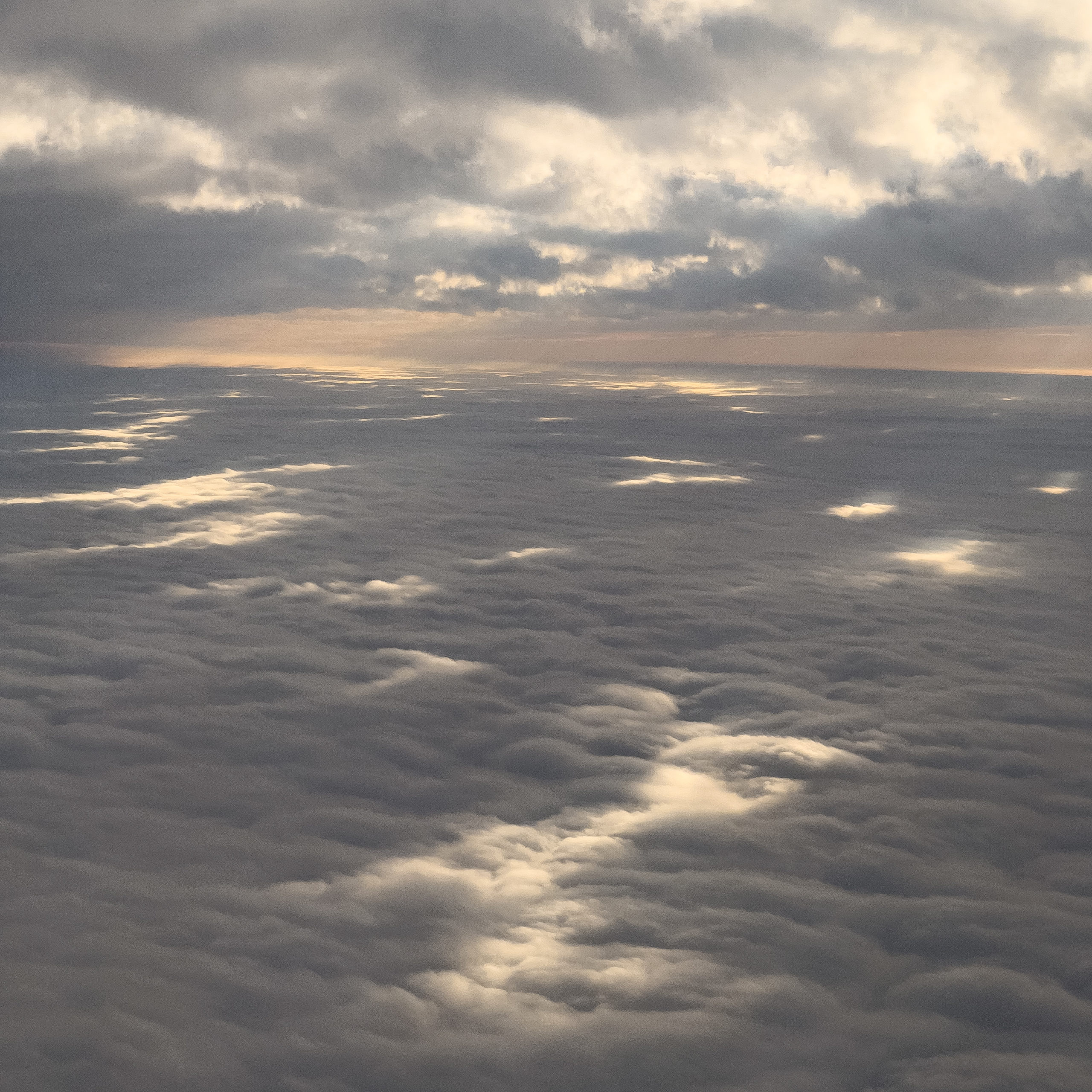
Moving slowly between two layers of cloud cover. Des étincelles de lumière qui jaillissent sur un duvet de barbe à papa à perte de vue. The hum of the motor gliding through a spectacle so fleeting it disappears and reappears before our eyes. Comme si de rien n’était.
March 5 to March 12, 2024

Found texture, Knight Brown Nature Preserve, Rockingham County, NC.
February 27 to March 6, 2024
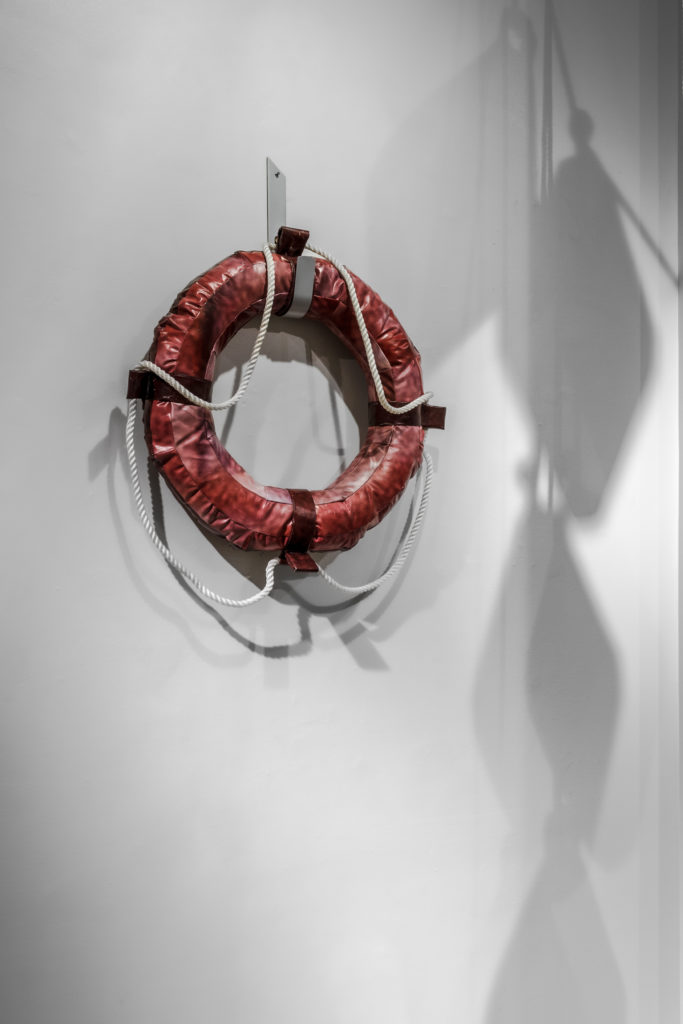
The Flotation Devices Series (2020-present) explores migration and loss at sea and the long shadows cast by missing people around the world. In English, staying afloat is an expression that indicates remaining financially solvent and not overwhelmed by debt or financial difficulties. Floating itself implies the capacity to move from one place to another, if we are able to navigate the waters around us. Life savers are designed to be thrown to a person in water to enable flotation and to prevent drowning. Covering and reproducing these tools as extensions of human bodies invites viewers to consider who gets saved, by whom, and under what circumstances.
February 6 to 13, 2024
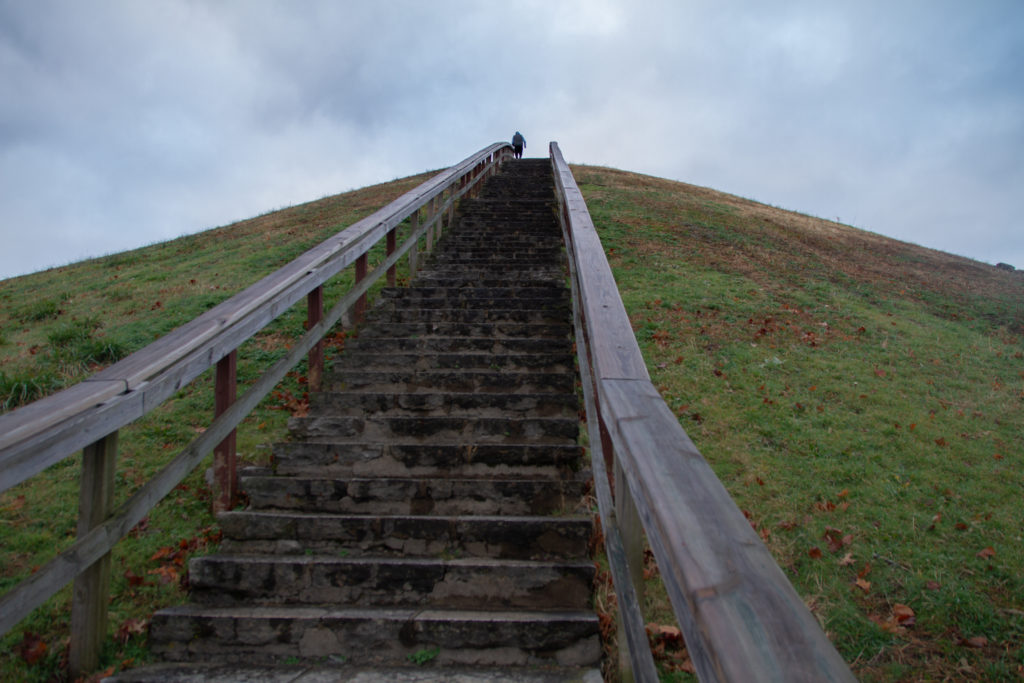
I go to them to get away from personal injury lawyer highway billboards rest stops extraction no man’s land Walmarts hotel chains dollar stores dead malls casinos fireworks country christian talk radio post industrial landscapes on the way from point A to point B. I plan my pilgrimages, making myself stop and stretch and get out of the car and walk around these solid spaces imagining what they were like long before we were here. I close my eyes and block out the noise of my children wailing in the back seat refusing to go out to come back inside and picture myself in this place when it was another place.
One of the two largest conical mounds in eastern North America, the Miamisburg Mound was build by Adena Culture people,who began occupying the Ohio River Valley around 1000 BC. Partial excavations from 1869 reveal a mound built up in several stages, with buried human remains, ashes, stone, charcoal, wood, and animal bones at various stages in the the 65 feet tall structure. The accumulation of matter presses down on the earth and reaches up to the sky. In college, Jay Cantor told me man is made and remade by the process of production and I see that and I am that but I am also a woman and I need to get back into the car to get back to work to put food on the table to play a lullaby over the speakers to cover small feet with security blankets and to hand out water bottles and snacks that will inevitably spill when I am digging for missing legos in between bags piled on suitcases on our way home.
January 17 to 24, 2024

Carcass found rusting in the woods, on the North Carolina and Virginia State line, near Milton NC. The Ford Model A was a resounding market success; it replaced the Model T, with almost 5 million vehicles sold from 1927 to 1932. Considering using generative AI to fill it with wax or flowers or feathers and tar. Thinking anything so easy is a form of stealing. Berating myself for being so conservative. Reflecting on why my lens is always aimed at ruins and leftovers and things that fall apart.
January 2 to 9, 2024
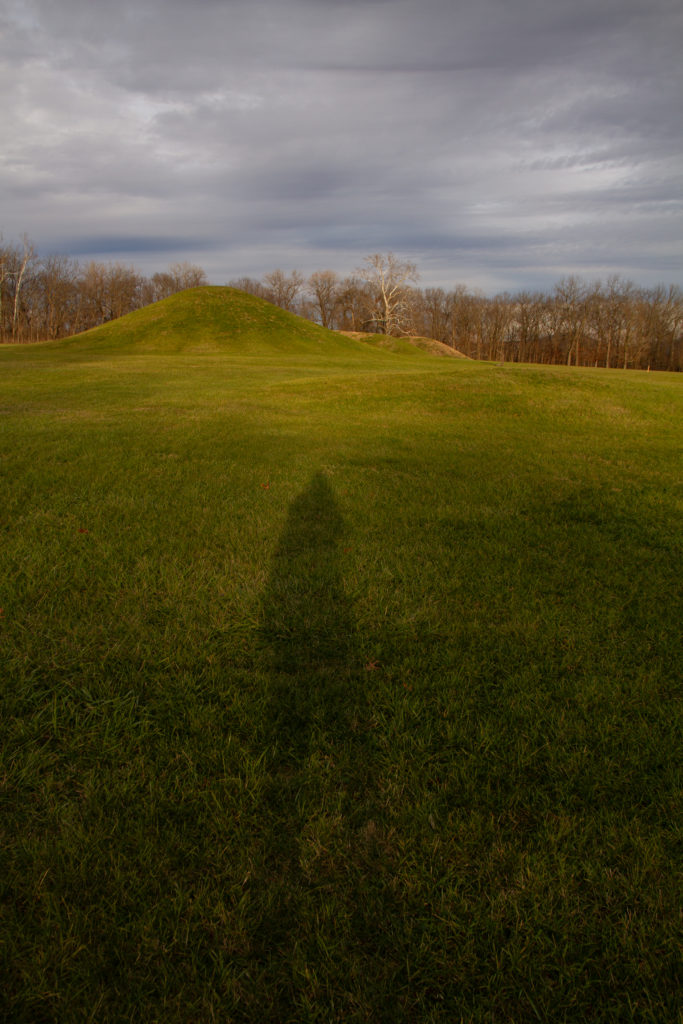
The Mound City Group in southern Ohio is a 120-acre ceremonial ground that is one of the most important and well-known archaeological sites in North America, dating back at least 1,500 years.
The original site was occupied by the U.S. Army’s Camp Sherman during World War 1, when much of the original earthworks were completely destroyed to house military buildings and personnel. As a result the 23 burial mounds on the site are primarily recreations based of off 19th century field surveys. The scale and positioning of the individual earthen elements are intended to replicate the look and feel of the site before it became a military training center and indeed the National Park Service describes the site as « fully restored. » Today the vast field feels both like a dreamscape when viewers imagine existing in the distant past and like a façade empty of its’ sacred status, at the same time.
Many Hopewell sites lie along the Scioto River, which border the square earthen enclosure around the mounds, to the East. Experiencing the site just before the winter solstice gave me a sense of immense calm at the close of a tumultuous year. As sirens began to blare from the maximum security prison directly south of the Hopewell Culture National Historical Park, I remembered that this was all a recreation, not a place that had magically withstood the test of time or the maxim that history is written by the victors. Is a pilgrimage to a simulacrum still a pilgrimage?
December 20 to 27

November 21 to 28

Work in progress, Cast Iron, Fall 2023. This Spring I will be making a series of sculptures combining cast metals and sewn workwear surfaces. The slogans and texts in this piece are all drawn from official labor rights signage, labor law posters, court cases and studies on labor law violations, labor protest picket signs, and handwritten historical letters responding to labor protests in the United States.
November 15 to 22
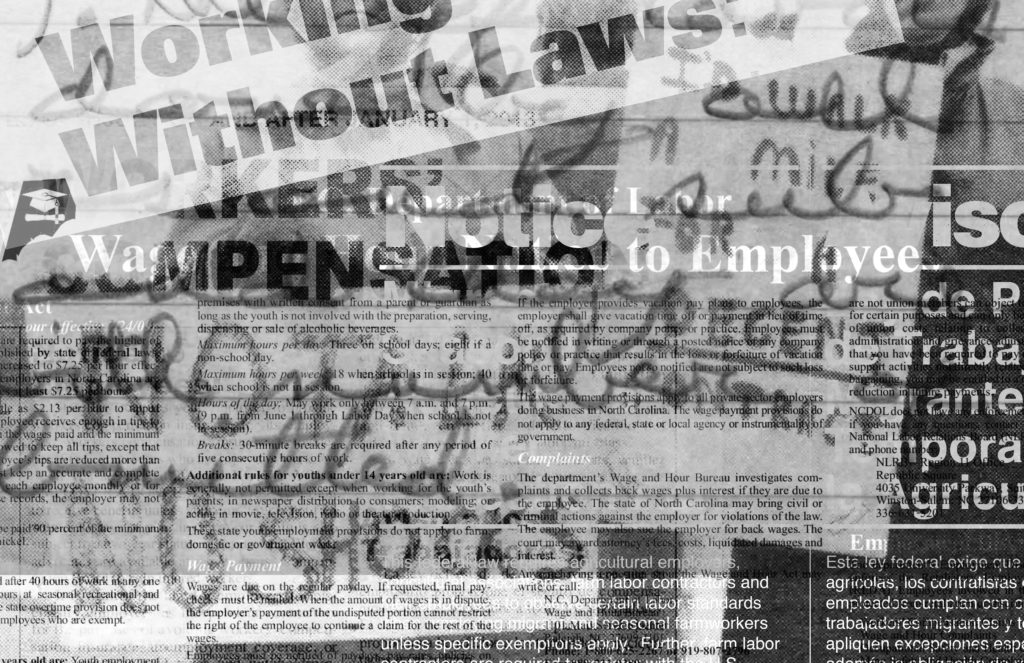
Work in progress, digital collage for open cast sculpture in iron, Fall 2023.
November 7 to 14
Looking at Rothko and thinking about seeing, Paris, 2023.
No under and over: no stable layers- nothing is merely above or below anything else
Nothing is completely isolated or separate- our perceptions of an area are totally dépendant on those around it
Beginning with the background…? Washes and scumbling as start points AND endpoints.
Border spaces are always active
The line on the wall made by the color on the side edge of the stretched canvas
Clouds and shadows: infinite weight
Entre intention et aléatoire, letting the paint run…
The effaced edges bring relationships into focus: they make the picture
A shape needs requires adheres to the color field next to it
A formula endlessly repeated as a window to infinity: 3 planes of color on a rectangular plane are 3 propositions decisions from among endless possibilities.
Elevating stains to the level of fresh paint
Color fields within fields that only emerge after you see the rest of what you were looking at
Equal sign zero eleven arrête before they becomes symbols; remaining on the precipice of legibility
Subtle gradients making us aware that light always and forever affects what we see
Windows to what is past or through them but windows also as objects in their own right. Maybe we are also panes of glass.
Edges bleeding and absorbing paint pigment dirt
Rust on the sea under a waning moon: an empty Polaroid. The dimensions of the canvas making and unmaking the image.
Painting spilling paint (not spilled).
My flag cannot just be mine and your flag cannot just be yours.
All soil can be fertile if we let it give birth…
Can landscapes exist without us? A horizontal line is always a horizon. Lunar landscapes always come from Terra. From us.
The rich full flavor of welled-up joy near the end.
I want to see all of those things.
October 24 to October 31

Flags blowing in the wind sewn out of used textiles. Bright and faded and worn and starched work wear, a ubiquitous identifier of blue collar histoire ouvrière en France. Blue collar clad hipsters rocking the moral authority of manual labor in Brooklyn. The sound of street level flags rustling in the the wind and billowed out towards pedestrians on creaking temporary flagpoles. Foisted up near current and former union headquarters on 14th street (the Italian Labor Center, DC 9, and the International Brotherhood of Teamsters), we ask what is the place of labor in the contemporary metropolis? Who decides what we make and how?
October 17 to October 24

Warm light so hot I can almost taste it. A bus covered in weeds and vines home to squirrels cobwebs lining broken window panes. A bus that could have been my bus when I was growing up. The driver stopping slowly at the curb and waiting for a gaggle of kids to trudge on. A gang of middle school bullies sizing you up as you turn past the stairs. Furtively meeting someone’s eyes to find a seat. No seat belts. The rumble of the engine and the screech of the brakes as you lurch forward.
Thankful the wheels could go round and round without the threat of dead bodies lying in the street hanging over my head and freezing me in my tracks.
October 10 to 17
Toy boats in the summer. Shrieks of laughter. Off up and away!
July 25 to August 1

I returned to Saint-Étienne after a year’s absence. My old studio used to have a municipal alarm system like the one in the image, above. It would blare out with deafening wailing sounds like clockwork on the first Thursday of every month. I usually put on ear protection and worked through the noise. If the alarm test day coincided with a morning when I brought my newborn into the studio, we had to go out of the building and down the street to escape the noise. I can’t imagine living somewhere where air raid sirens are an almost daily occurrence that actually indicates real and present danger.
June 27 to July 4

Mahsa Amini died on September 16th, 2022, after being tortured and beaten to death by Iran’s morality police for violating hijab regulations at the age of 22. Her death sparked ongoing protests and repression of activists in the country. Demonstrators continue to use the Kurdish feminist slogan « Woman, life, freedom » to highlight the situation of women in the country, which continues to imprison female journalists and to subject them to show trials behind closed doors for their reporting on women’s rights. Following Amino’s death, women around the world cut their hair in a gesture of solidarity with the victim. I cut and kept my hair as well, using it as a medium with which to alter a found Persian rug.
June 13 to June 20
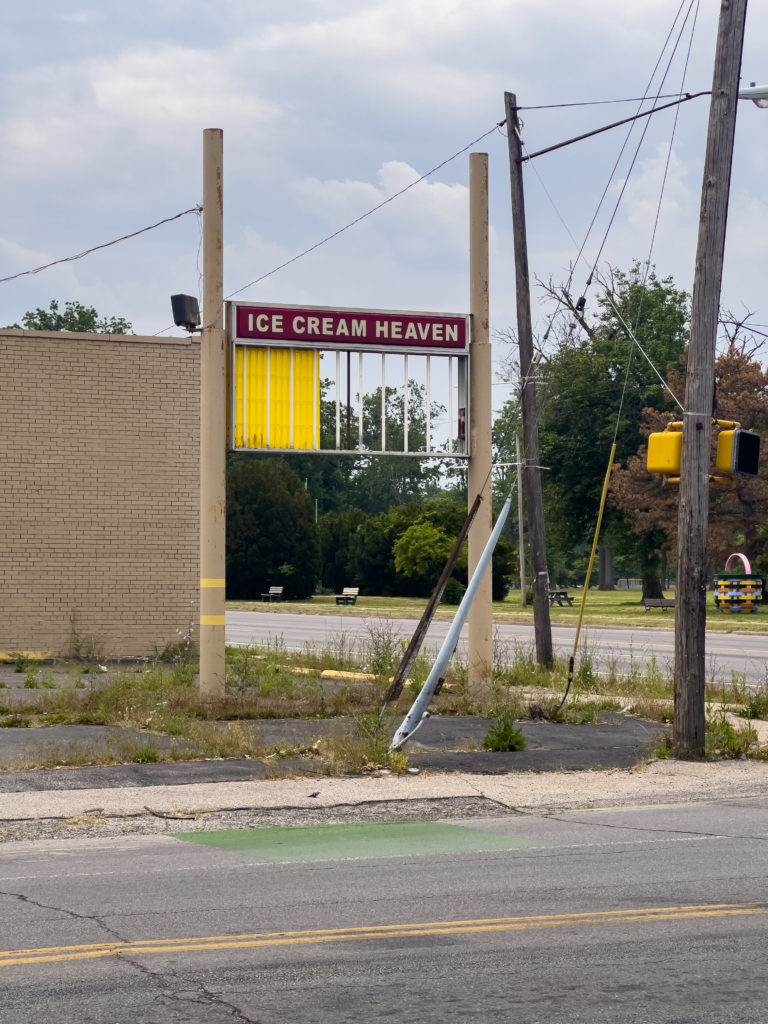
Sweet Cream dribbling down a child’s chin. Years of crowded picnic tables and beach umbrellas ripped by the wind tumbling down the road. Vanilla and vanilla and chocolate and bright blue superman swirled with yellow and red. Sundaes. Sprinkles. Maraschino cherries. Wax paper napkins swirling around the parking lot. Just down the road from the U.S. Steel plant and across from the ball field. Heaven.
May 23 to May 30

I am obsessed with the texture of tree bark in the wild. Nooks, crags, and crannies constantly beckon the lens of my camera as I lag behind my family of hikers, documenting every strange shape that catches my eye. I am fascinated by the impulse to mark-making on a living thing. Yesterday, I came upon row upon row of vandalized trees in a State Forest.
The idea of tattooing a person against their will evokes images of slavery and genocide but maybe my metaphor means I am too shocked-sensitive to violence. The ritual scarification of nature is benign for many people. Cutting through cork is a form of proof: a testament of love from Robin Hood to Maid Marian, a memory engraved in a blackboard that will outgrow your body, a permanent way to state ‘I was here. »
May 16 to May 23

I flew South like a migrating bird, towards the Atlantic Ocean and the petrochemical plants. Between the storied buildings of academia and the strip malls of urban sprawl, there was a carefully curated swamp, complete with do-not-feed alligators and roving turtles. Water oozed between overgrown ferns, with toads bobbing in and out of muddy alcoves between the undergrowth. Mature majestic trees, covered in Spanish Moss and otherwise protected in their 100+ year-old glory by the esteemed Live Oak Society, surrounded the space.
Neither Spanish nor moss, the flowering plants straight out of a William Faulkner novel dangled over tree limbs and swayed with a unhurried tempo as hot air rose up and over the ground. Magical and rootless, Tillandsia usneoides receives nutrients directly from the air and rainwater. Small fragmented festoons break off of the main plant, flutter, and regrow like starfish once they find a good place to call home.
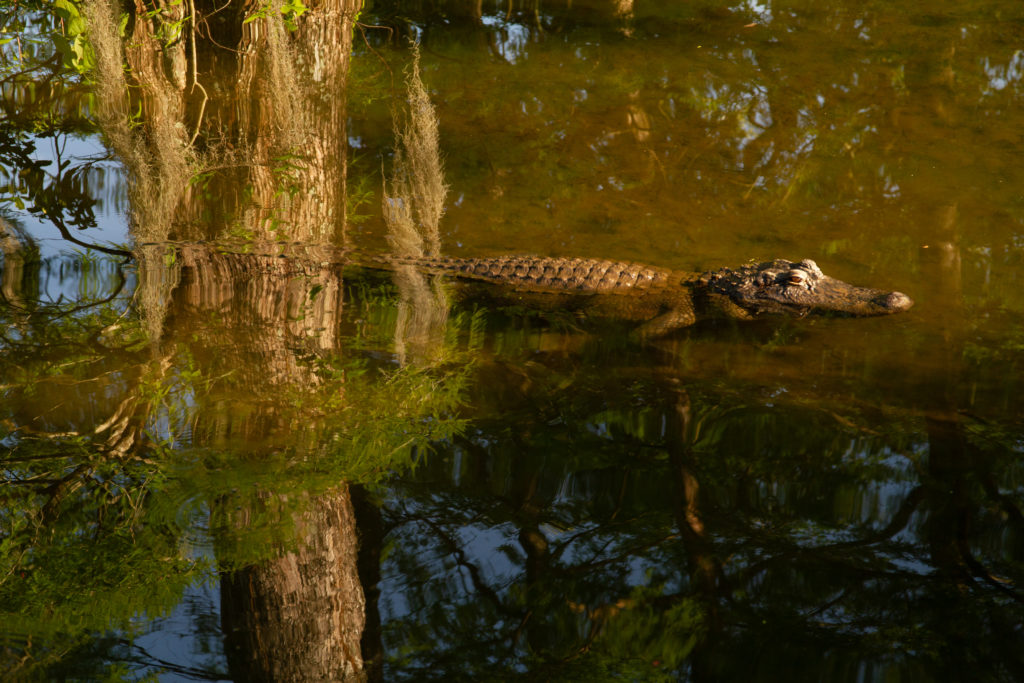
May 9 to May 16
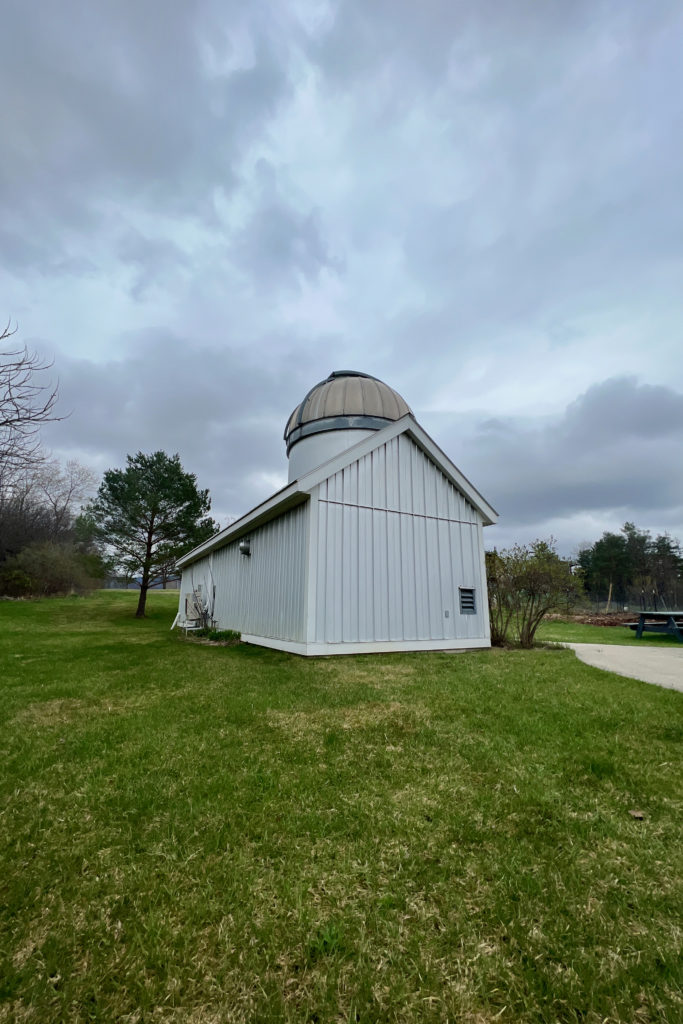
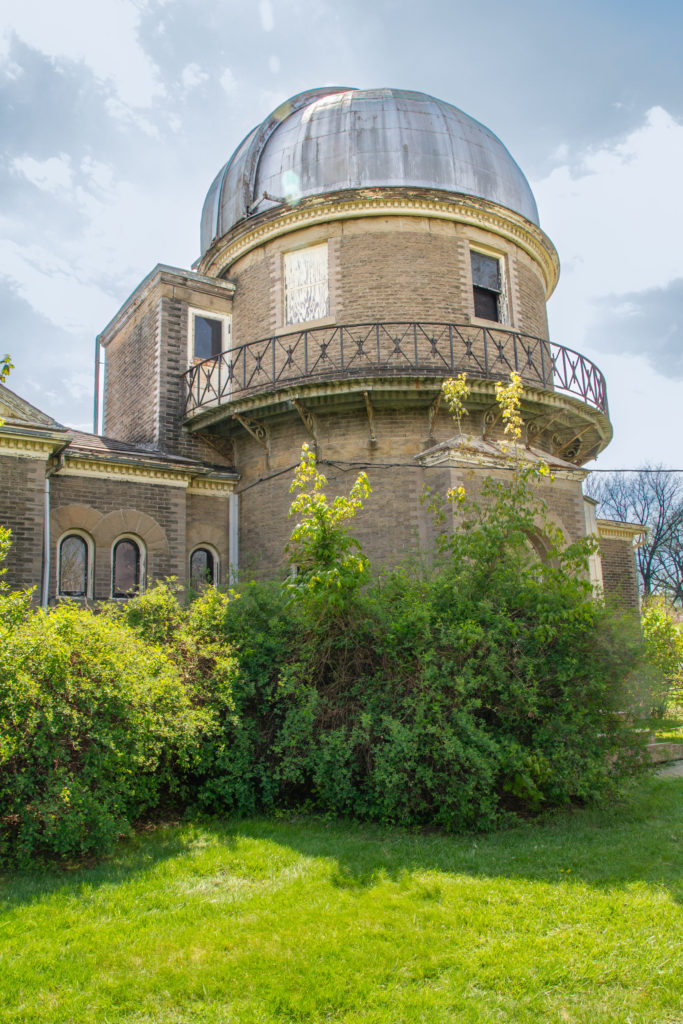
In a small town in the middle of nowhere somebody convinced somebody else that it was worthwhile to look up at the stars. They began by looking up and out into the vastness of the night. By aligning lenses and recognizing patterns, they mapped moons and dust tumbling away from collisions between frozen rocks and molten lava. While entering numbers on a worn paper ledger or an outdated computer terminal, they imagined worlds colliding and created anew what we could see as we focused our vision away from our tiny earthbound bodies. Then the air around became muddied with the blue light of a million monitors. We decided we could get a better view by sending mechanical emissaries beyond this brave o’erhanging firmament. Our observatories remained on the ground, reminding us of what once was.
April 25 to May 2

If a tree falls in a forest, and there’s no one around to hear it, does it make a sound? … I went to wander in the woods at the end of Winter and the beginning of Spring. T-shirts to snow and back again. Tiny saplings were pulling themselves out of the undergrowth, bluebells hesitantly unfurling their petals, deer footprints still fresh in the mud. We walked for a few hours with the sound of birds whistling in the air above us and the river rushing underfoot. Every 10 minutes, the air was punctuated by gun shots. Louder and louder they came in a cascade of rounds fired with deafening precision. The explosive noise of slick bullets raining on targets or beer bottles or whatever was propped up on the back porch of the house next door barricaded by pickup trucks parked on the front lawn. Wishing it would end, we walked to our car in silence.
April 18 to April 25

I am about to travel to 4 States in 3 weeks. I am waiting with baited breath for the future to announce itself. I’m looking up and slipping down. Disoriented. Ready. Backing away. Showing off and asking for help. Trying to maintain my balance. Learning by watching others. Avoiding puddles. Gripping handholds. Seeing how far I can reach. Calling out. Trying again. Maybe this time.
March 7 to March 14

Robert Smithson created one of his first works of land art, Partially Buried Woodshed, during a one week artist residency at Kent State University (Ohio, USA) in January 1970. The piece, a form of radical “anti urban planning,” infamously argues that demolition can be a valid an artistic practice. To make the work, he partially buried an abandoned 220 m3 wooden shack by pouring twenty truckloads of soil upon it, until the frame of the building bent and cracked under the weight. Once the action was completed he, together with his New York gallerist, officially estimated the value of the work at $10,000. Smithson formally transferred ownership to the university while insisting that it subscribe to an insurance policy to prevent damaged or destruction during maintenance. After the site’s outer wall was tagged with the date of « May 4, Kent ’70, » in reference to the famous shooting by the national guard at Kent State that day, the structure itself was partially burned by arsonists in 1975 leading the University to deny responsibility for the artwork as Smithson’s widow, artist Nancy Holt, fought to preserve it.
After writing about Smithson’s work in my Ph.D thesis 10 years ago, I was finally able to make my own pilgrimage to the artwork’s remains in March 2023. The dilapidated mound now has a small blue commemorative plaque that reads « On this site, Robert Smithson (1938-1973) at the invitation of the students and faculty of the School of Art, began Partially Buried Woodshed / January 1970. » A while ago, underneath the label, someone had scrawled the name « HOLT » in white paint that was now slowly wearing off. Nancy Holt passed away a year before the University installed the sign in 2015.
March 7 to March 14
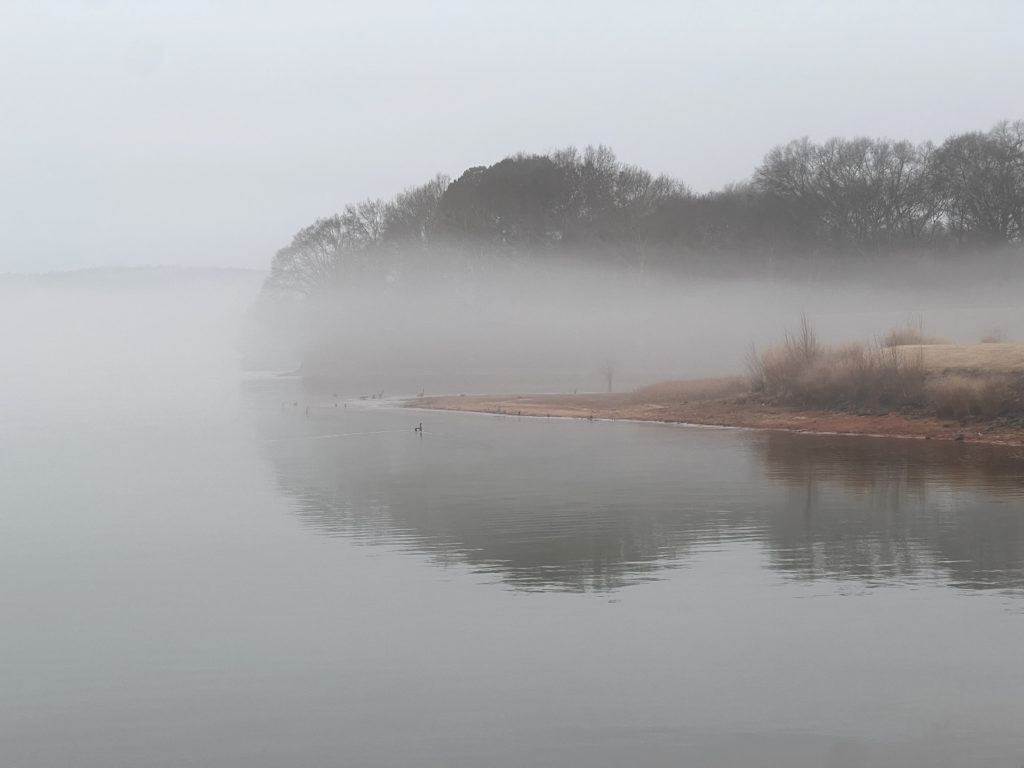
In the legends of King Arthur, the Lady of the Lake is an ambiguous mythical figure, an enchantress who emerges from the mists of Avalon to affect the course of history. In versions of the stories by different authors, she is sometimes one person and sometimes many, representing various tropes of a woman as a caregiver/healer, temptress, wise woman, and sorceress. Also know as variants of Nimue or Viviane, she lived in an otherworldly realm under the water where she raised Lancelot and changed historical events in the real, physical world. In various versions of the Matter of Britain stories, she gives the sword Excalibur to Arthur, saves Arthur when he is near death, and intervenes at pivotal moments in the collected stories. As a symbol of a powerful and independent woman, she alternately rejects, imprisons, and eliminates Merlin while also learning from him and carrying forward the long tradition of female Celtic goddesses associated with water. The Lady of the Lake exists like a cloud that forms when cold air drifts across relatively warm water, between and beyond our sense of touch, distorting our vision and inviting us to perceive the unseen.
February 23 to March 1
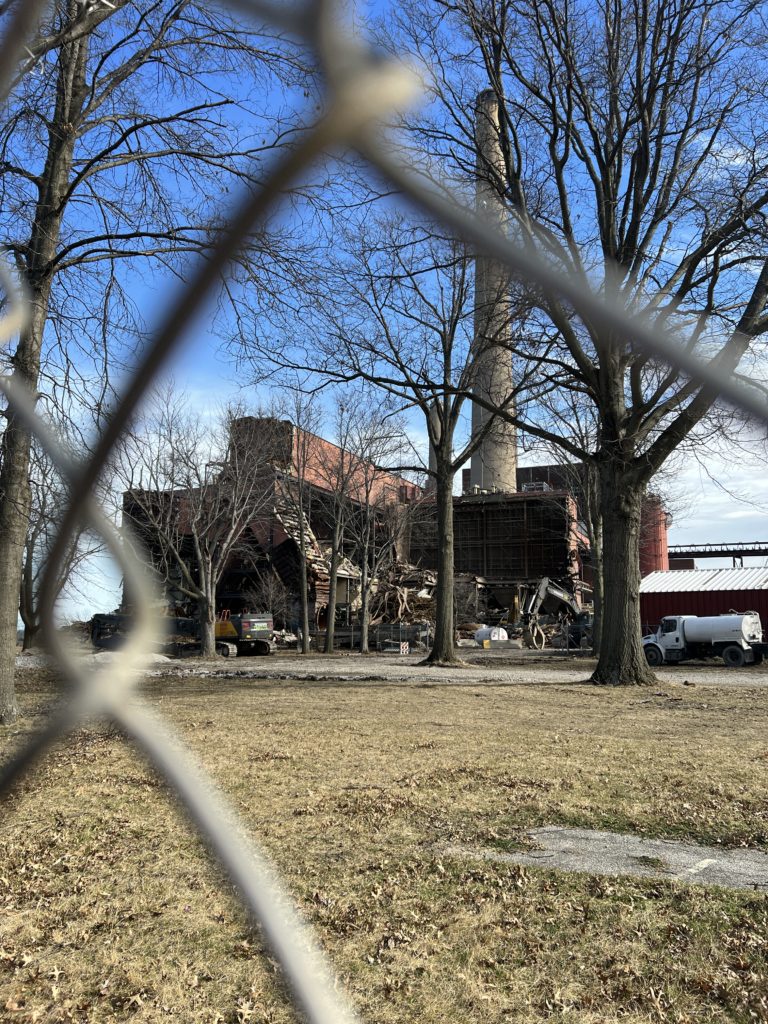
Built between 1925 and 1926 at a cost of $30 Million USD, the Avon Lake power plant was shut down in 2021. The power station processed over 4,000 tons of coal a day and was cited by the Environmental Protection Agency for emissions violations.
The nonprofit Clean Air Task Force’s study from 2010 concluded that death and disease attributable to fine particle pollution from the Avon Lake power station include: 29 deaths, 47 heart attacks, 440 asthma attacks, 21 hospital admissions, 17 cases of chronic bronchitis, and 23 asthma ER visits PER YEAR.
February 15 to February 22

WSMR is the largest military installation in the United States. It was the detonation site of Trinity, the first atomic bomb on 16 July 1945. The road to the Headquarters includes road signs prohibiting the use drones and forbidding the use marijuana, and warning drivers not to take photos, not to leave their cars due to potential traces of radioactive contamination, and not to remove trinitite, a mildly radioactive light green glass formed from melted desert sand in the seconds after the first nuclear weapon was detonated (I was tempted). This image was taken from Aguirre Springs Road, just west of the Range visible on the upper right hand of the photograph.
February 7 to February 14

I find dioramas mesmerizing. The Immel Circus contains 2,620 hand crafted pieces: thirty-six elephants, 186 horses, 102 assorted animals, ninety-one wagons, seven tents, and 2,207 people. A miniature embodied postcard from another era, it restages and celebrates the past with an impressive fidelity to detail. The effect is uncanny: I imagine myself as a child among the crowds of plastic figurines, grasping for cotton candy and bursting with laughter as clowns take over the horse-drawn squad car.
January 24 to January 31 2022
I was making paper for a wall drawing for a show in Upstate New York and the steam from the boiler and the hum of the beater began to slowly melt the snow and ice on the outside of the greenhouse that I was working in.
January 10 to January 17
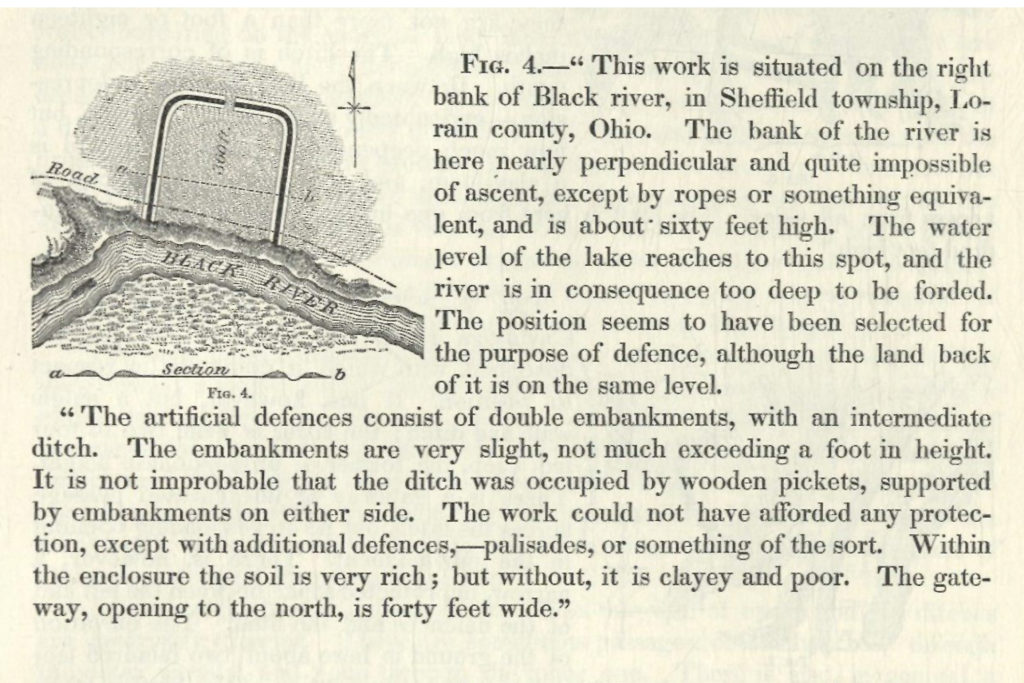
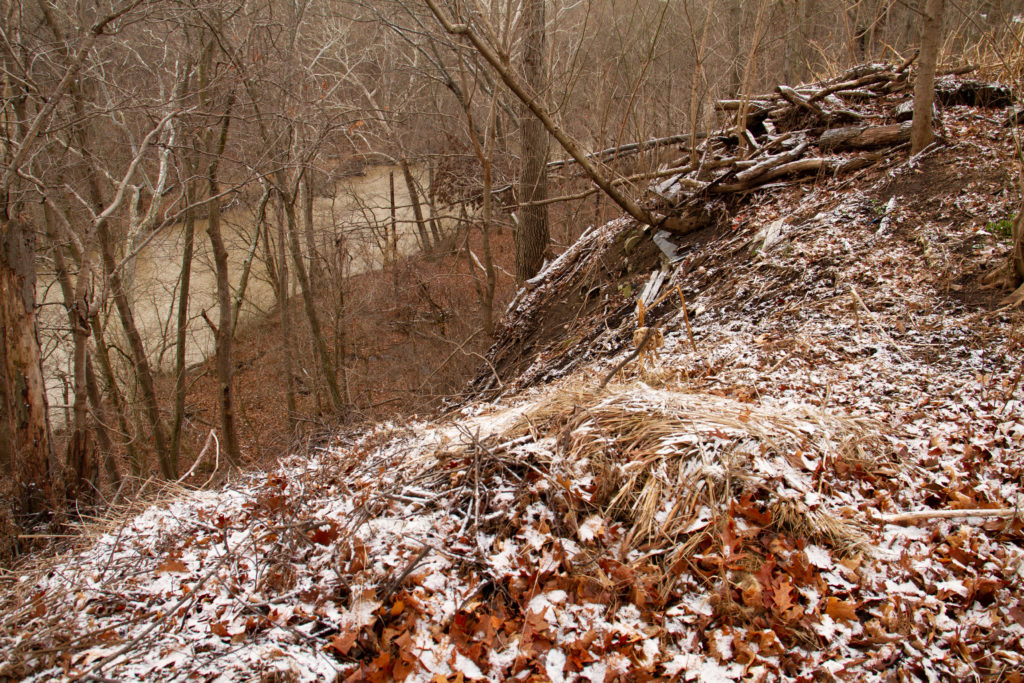
I am working on a series of sculptures and installations informed by the sacred geometry and ancient works of the Hopewell, a network of precontact Native American cultures that flourished in settlements along rivers in present-day Ohio and beyond, in the Middle Woodland period (ending around 500 AD). This photo was taken from a pilgrimage to a site in Sheffield Township identified in the Smithsonian Institution’s very first publication, Ancient Monuments of the Mississippi Valley (Squier and Davis, 1848). Some of the earthworks mounds produced during this time are larger and more precise than Stonehenge, even though most have been almost completely eroded by the passage of time and plowed and paved over by white European settlers. The site identified in Lorain County is no longer discernible to the naked eye. The works occupy precise spaces and situate themselves in relation to specific moments in time (often in relation to lunar cycles).
Maybe searching for them will also ground me in the present.
January 1 to January 8 2022
Sea anemones are underwater creatures named after terrestrial flowering plants. A ring of tentacles surrounds a central mouth, brimming-no-gushing with life. This movement is uncanny and erotic, pulsating and repulsive. A fitting entrance into a New Year.
December 20 to December 27


These fleeting lines in the snow are random, unintentional, unmakings. They appear as I lift up twigs and branches on my lawn, just one half of an X. They will soon melt. Or be blown over by gusts of wind. Or get trampled on by tiny feet. They could be traces of something I stumbled upon. I can give them my attention or ignore them completely. They are lines made by pulling things away from and outside of their surroundings.
November 29 to December 6
I drove home for the holiday for the first time in fifteen years.
Shot on Lake Michigan in Wilmette, IL on “Black Friday”.
November 16 to November 23
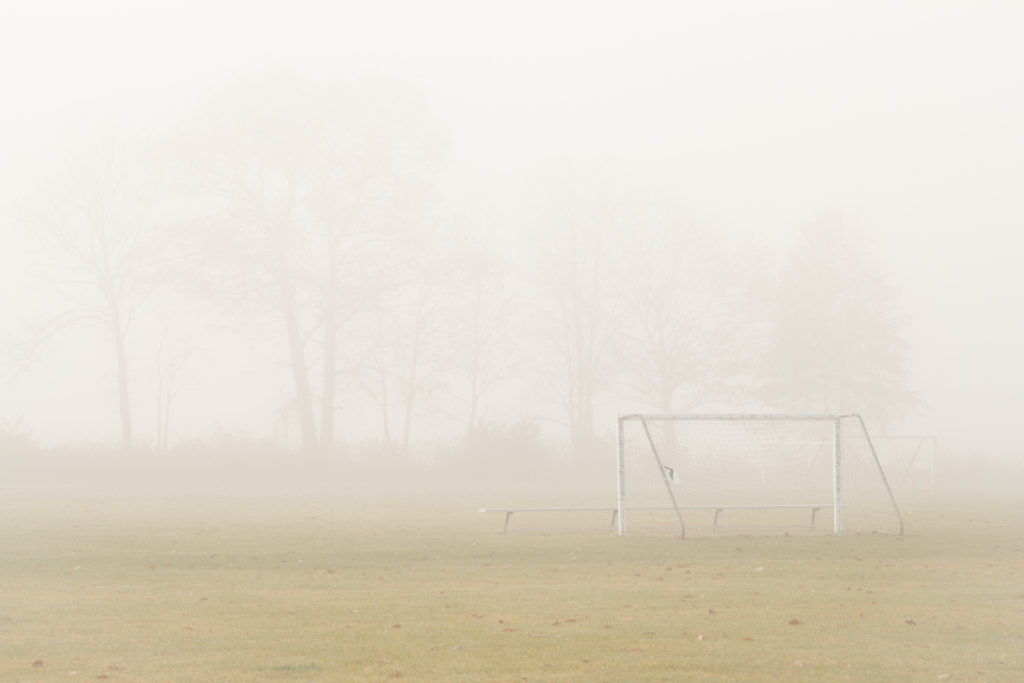
I am continuing to explore fog in my photographs. This growing series of images depicts a kind of atmosphere that is at once present and impossible to grasp. A low-lying cloud that also clouds our vision, fog makes the familiar mysterious, even impenetrable, and invited us to reconsider simple, common locations, in a new light.
November 8 to October 15
There is a tall-grass prairie preserve near where I live. In 2015, the Western Reserve Land Conservancy acquired a 63-acre property on the southern edge of the City of Oberlin in Lorain County. The preserve is part of the Black River Watershed and originally belonged to the Copeland family, which was actively involved in the abolitionist movement and the fugitive slave assistance network. The spirit of John Anthony Copeland lives on in this place.
October 5 to October 11
Milk Bar, participatory art installation, 52 bars of soap produced from breast milk, September 25-30, 2022.
In September, I flew to France alone for a week to hang a solo show Œkoumène (Ecumene) at l’Angle, an art center in La Roche-sur-Foron in the Alps. I have a 9 month-old baby that I usually breastfeed multiple times a day. I collected all of the breast milk that my body produced as I was preparing my exhibition and turned it into soap. The bars of soap were given away for free to the public during the show’s opening night. My action came from a desire to foreground the relationship between my body right here (right now) and the neutral white cube of the exhibition space.
September 28 to October 4

This photo was taken on Bainbridge Island, WA near Port Madison, in 2018. I have been interested in images of bodies in water for a long time, and seeing the Crown Letter images last week gave me the idea to respond with this photograph.
September 20 to September 27
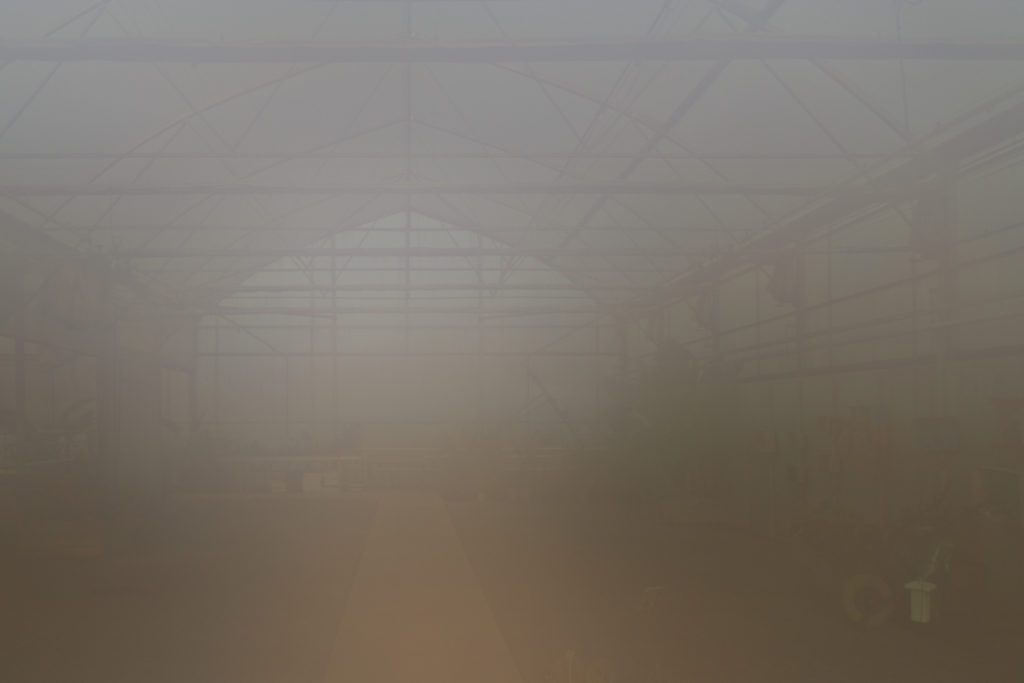
June 21 to June 28
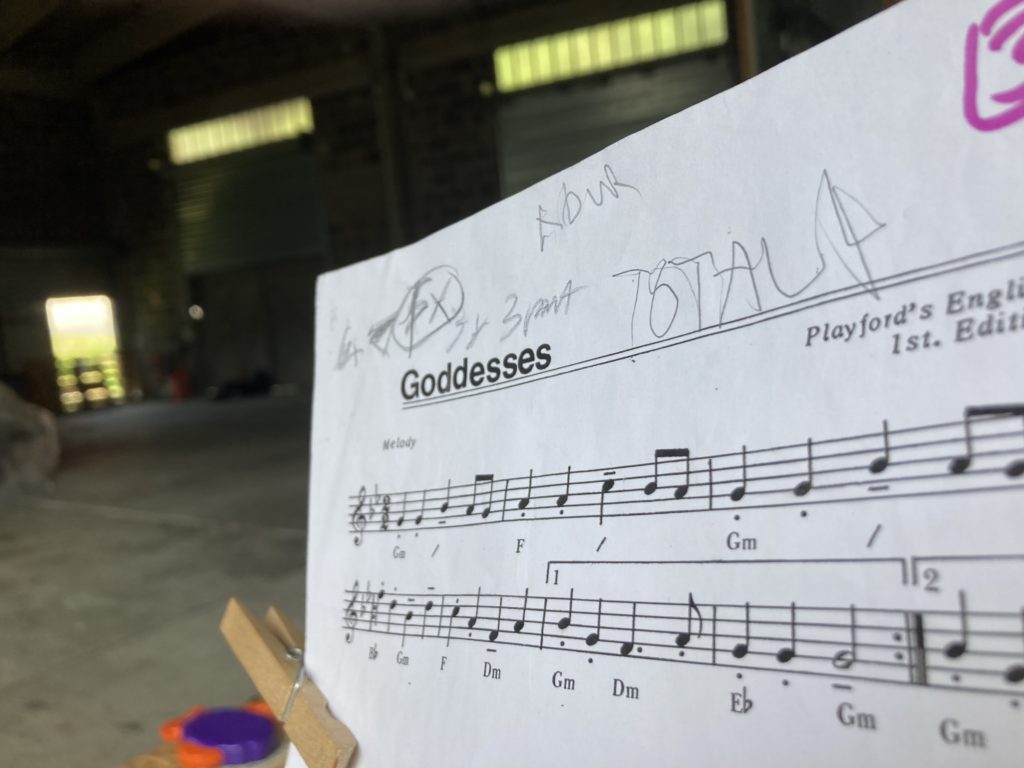
March 1 to March 7

Kasia Ozga is a Polish French American sculptor and installation artist. Her work explores evolving notions of physical presence by addressing issues such as waste, (im)migration, environmental justice, and bodily integrity. Ozga is a former Kosciuszko Foundation Fellowship recipient, Harriet Hale Woolley grantee from the Fondation des Etats-Unis, Jerome Fellowship recipient at Franconia Sculpture Park, and Paul-Louis Weiller award recipient from the French Académie des Beaux-Arts. Her work has been exhibited in over 10 different countries and she has participated in residencies in Europe and North America including Shakers, Nekatoenea, Pépinières Européennes de Création, ACRE, and KHN. Currently an Assistant Professor of Sculpture at UNCG, Ozga holds a Ph.D. from the University of Paris 8, an M.F.A. from the Jan Matejko Academy of Fine Arts in Krakow, and a B.F.A. from the SMFA at Tufts University, Boston.
https://kasiaozga.com/

